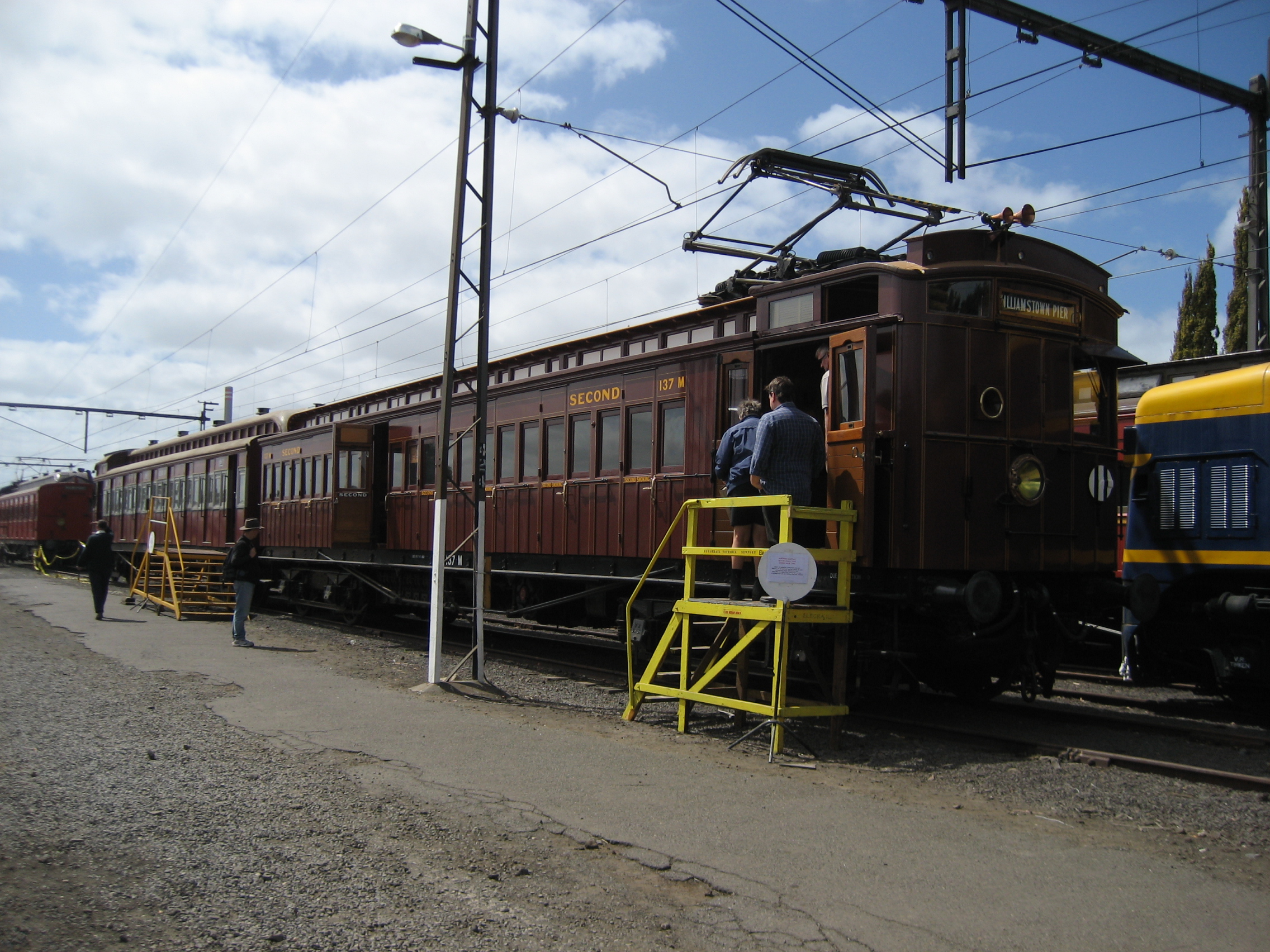- Swing Door (train)
Infobox EMU
background =
name = Swing Door

imagesize = 300px
caption = Swing Door carriage at Newport
interior
interiorcaption =
InService =
Manufacturer =Victorian Railways
factory =Newport Workshops
Family =
Built =
Refurbishment =
replaced = Steam hauled carriages
yearconstruction = 1887-1907 (built), converted 19
yearservice = 1919 (as EMU cars)
yearscrapped = last in 1984
numberconstruction =
numberbuilt = 144 motor cars, 32 driving trailers, 112 trailers
numberservice =
numberscrapped =
Formation =
designation = 1-164M (motor cars, with gaps), 1-32D (driving trailers), 1-111T, 126T (trailers)
Operator =
Depots =
LinesServed =
CarBody =
CarLength =
CarWidth =
CarHeight =
floorheight =
platformheight =
entrylevelorstep =
art-sections = None
MaxSpeed = 83km/h
Weight =
Capacity =
Acceleration =
Deceleration =
Traction = 4 x 105 kW GE239
Power =
Gauge =
Voltage = 1500V DC overhead
Brakes =
SafetySystem =Swing doors, more commonly known as "Dogboxes" or "Doggies" are a wooden bodied
Electric Multiple Unit train that operated on the suburban railway network ofMelbourne , Victoria,Australia .Swing door cars were reasonably narrow. This was to ensure that two opposing trains with open outward swing doors were clear of each other. At certain locations, clearances were tight and there are stories of swing door cars losing doors that accidentally opened. [http://www.pjv101.net/cd/pages/c226m.htm Peter J. Vincent: M - Swing Door Suburban Motor Car] ] The fleet could be seen running in any arrangement from 1 car, (using one of the double-ended M cars) to 8 cars.
History
The Swing Door trains were converted to electric traction from 1917 to 1924 from steam-hauled passenger cars. The cars the Swing Doors were converted from were 13.7 metre long bogie cars, the majority of cars were built between 1887 and 1893. These cars were extended by two compartments to a total length of 17.4 metres, and then fitted onto new under-frames and bogies.S.E. Dornan and R.G. Henderson: (1979) "The Electric Railways of Victoria'] The conversion process was suddenly halted in 1924, with part completed cars were patched up and returned to service with original codes and numbers.
They initially entered service with class codes such as 'ACM' 'BCM', and 'ABCD' indicating both class and type, being rationalised to a simple 'M' (Motor car), 'T' (Trailer car) and 'D' (Driving trailer) code in 1921, with all trailers being made first class, and all motor cars second class.
The trains were fitted with the same
General Electric multiple unit traction equipment as the Tait trains, so occasionally mixed sets occurred.6 Swing Door M cars were converted to parcels vans, (numbered 10CM to 15CM) [ [http://www.pjv101.net/cd/pages/c106m.htm Peter J. Vincent: M - CM - Suburban Parcels Coach] ] and two M cars, 156M and 113M were modified for use as shunters in the
Jolimont Workshops .Fleet
The maximum size of the Swing Door train fleet was:
* 144 'M' motor cars
* 6 'CM' parcel motor vans
* 32 'D' driving trailers
* 112 'T' or 'BT' trailers ('BT' indicated second class)Demise
From the late 1950s to 1970 the swing door trains were replaced by the Harris trains. The last trains in service were the parcel vans, and the workshop shunters that remained until the 1990s.
Bogie s from a number of scrapped Swing Door trains were reused under the Y class diesel locomotives built in the 1960s.As of 2006, the only two operational cars are 107M and 137M, which are used on occasional tours run by Elecrail, a division of Steamrail Victoria. A number of other cars are under restoration.
References
External links
* [http://www.pjv101.net/cd/pages/tyswes.htm Peter J. Vincent: Swing Door Electric Stock]
* [http://vicsig.net/index.php?page=suburban&traintype=Swing%20Door Vicsig.net Swing Door Trains]
Wikimedia Foundation. 2010.
